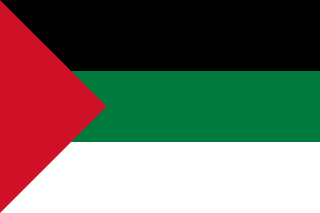
Giaour or Gawur, meaning "infidel", was a slur historically used in the Ottoman Empire for non-Muslims or, more particularly, Christians in the Balkans.

The Hashemite Kingdom of Hejaz was a state in the Hejaz region of the Western Asia that included the western portion of the Arabian Peninsula that was ruled by the Hashemite dynasty. It was self-proclaimed as a kingdom in June 1916 during the First World War, to be independent from the Ottoman Empire, on the basis of an alliance with the British Empire to drive the Ottoman Army from the Arabian Peninsula during the Arab Revolt.
The Sanjak of Montenegro was a province (sanjak) of the Ottoman Empire in the Balkan Peninsula roughly corresponding to modern Montenegro. It was created in 1514 from the borders of the former Zeta, ruled by the Crnojevići, which had earlier been organized into the Sanjak of Scutari in 1499.
A timar was a land grant by the sultans of the Ottoman Empire between the fourteenth and sixteenth centuries, with an annual tax revenue of less than 20,000 akçes. The revenues produced from the land acted as compensation for military service. A holder of a timar was known as a timariot. If the revenues produced from the timar were from 20,000 to 100,000 akçes, the land grant was called a zeamet, and if they were above 100,000 akçes, the grant would be called a hass.

The Albanian Vilayet was a projected vilayet of the Ottoman Empire in the western Balkan Peninsula, which was to include the four Ottoman vilayets with substantial ethnic Albanian populations: Kosovo Vilayet, Scutari Vilayet, Manastir Vilayet, and Janina Vilayet. In some proposals, it included the Salonica Vilayet as well. The creation of the Vilayet was confirmed in September 1912, but negotiations were interrupted a month later in October by the beginning of the First Balkan War. Plans for an Albanian Vilayet were lost with the Partition of Albania.

Aleppo Eyalet was an eyalet of the Ottoman Empire. After the Ottoman conquest it was governed from Damascus, but by 1534 Aleppo was made the capital of a new eyalet. Its reported area in the 19th century was 8,451 square miles (21,890 km2). Its capital, Aleppo, was the third largest city of the Ottoman Empire during the 16th and 17th century.
İspençe was a land tax levied on non-Muslims in the Ottoman Empire.
The adet-i ağnam was an annual tax on sheep and goats in the Ottoman Empire. Initially, the tax was known as resm-i ağnam; the name changed around 1550.
Taxation in the Ottoman Empire changed drastically over time, and was a complex patchwork of different taxes, exemptions, and local customs.
The Resm-i Çift was a tax in the Ottoman Empire. It was a tax on farmland, assessed at a fixed annual rate per çift, and paid by land-owning Muslims. Some Imams and some civil servants were exempted from the resm-i çift.
The damga resmi was a form of stamp duty in the Ottoman Empire.
The resm-i bennâk was a tax on peasants who had little or no land - those who did not pay the resm-i çift - in the Ottoman Empire.
The tuz resmi was a tax on salt in the Ottoman Empire.
The resm-i arus, or resm-i arusane, was a feudal bride-tax in the Ottoman Empire. It was typically a fixed fee, a divani tax; it was paid around the time of marriage, to the timar-holder, or even to a tax-farmer in their stead. The tax-collector might record details of individual marriages, although this was not equivalent to the church marriage-registers in contemporary western Europe and some of the tax records are unclear.
The adet-i deştbani was a charge, or tax, in the Ottoman Empire, which was a penalty for crop damage.
The gümrük resmi was a customs charge, or tax, in the Ottoman Empire. In modern-day Turkey the term continues to be in use: Gümrük vergi ve resimleri.
Sürsat was a form of food requisitioning with price controls, used by the Ottoman Empire to provide consumables for its armed forces. It was related to nüzül; sürsat was initially an obligation for the public to provide food and other supplies at a pre-fixed price which was unlikely to be favourable, or might even be merely symbolic. Istira was basically the same obligation, but supposedly at market price. Over time, nüzül, sürsat, and istira were all transformed into extraordinary cash taxes on people living near the route travelled by the army.
The resm-i mücerred was a bachelor tax in the Ottoman Empire, related to the resm-i çift and the resm-i bennâk.
The resm-i dönüm was a land tax in the Ottoman Empire; it was a divani tax paid each year to the landowner or timar holder, typically on 1 March.
Voynuks were members of the privileged Ottoman military social class established in the 1370s or the 1380s. Voynuks were tax-exempt non-Muslim, usually Slavic, and also non-Slavic Vlach Ottoman subjects from the Balkans, particularly from the regions of southern Serbia, Macedonia, Thessaly, Bulgaria and Albania and much less in Bosnia and around the Danube–Sava region. Voynuks belonged to the Sanjak of Voynuk which was not a territorial unit like other sanjaks but a separate organisational unit of the Ottoman Empire.



